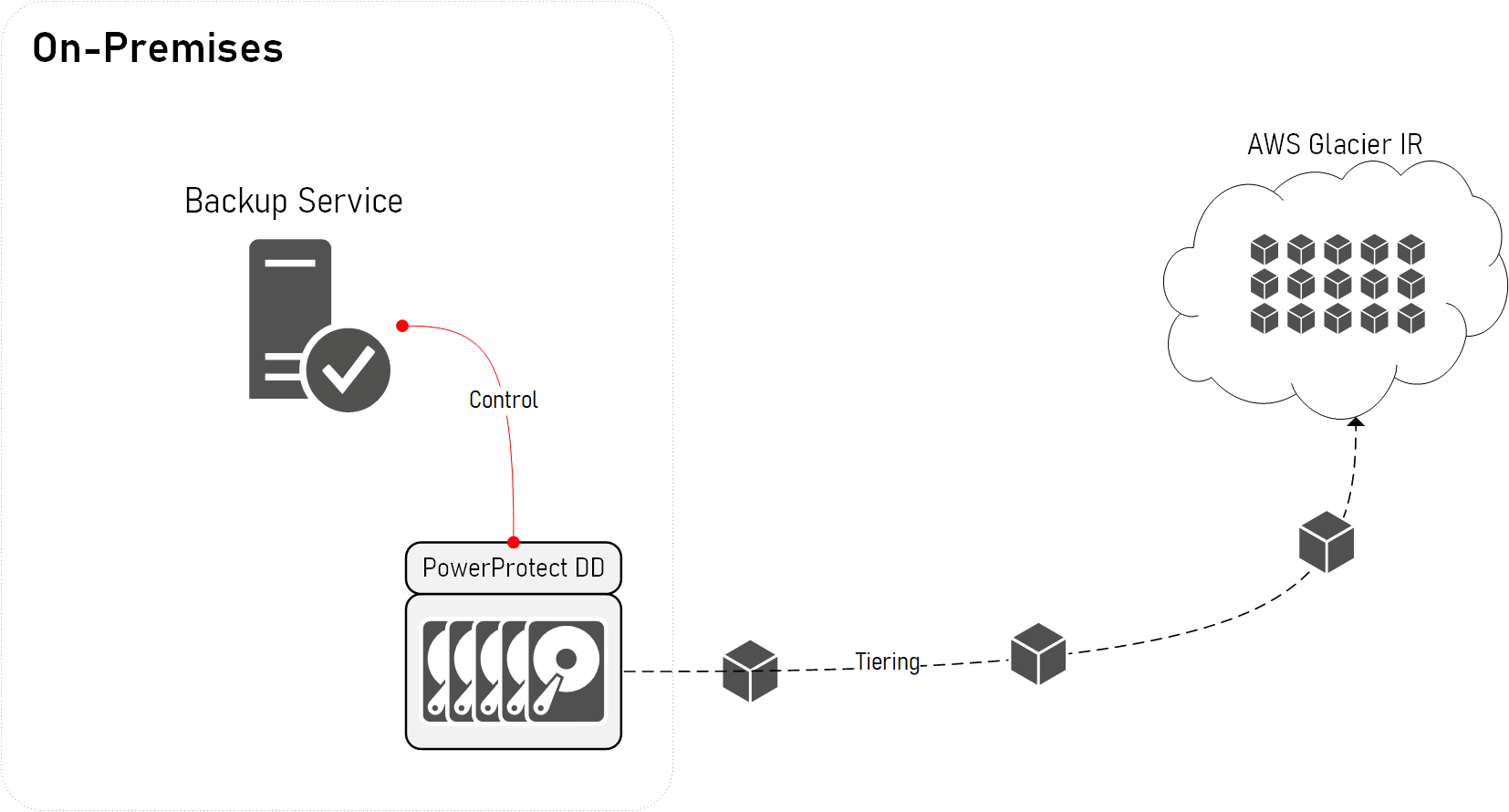In July, PowerProtect DD received an update to DDOS 7.9. In this article I want to talk about a fantastically helpful enhancement: Cloud Tier support for the Glacier IR storage platform.
Cloud Tier, within PowerProtect DD allows the system to connect to an object storage bucket (either in the public cloud, or on-premises) and transfer long-term retention (LTR) data that exceeds a configurable age out to the object storage, thereby freeing up active tier space.
Cloud Tier is there for providing cost reductions for storing LTR data where your RPO/RTO requirements decrease. And in most cases, your recovery performance objectives do decrease as the backup data ages. For instance: if your backup was taken yesterday, getting it back as fast as possible is the goal. If it was taken two weeks ago, you’ll want it back fast, but it’s probably for a data reuse use case rather than a high-priority operational recovery. And if it was taken 5 years ago, there’s a good chance the business isn’t fixated on the time it takes to recover, so long as you can recover it. Hence, moving it to object is desirable.

Cloud Tier can be used either as an Mtree movement policy on the Data Domain Filesystem, or as directed by backup application software. Products like PowerProtect Data Manager, Avamar and NetWorker coordinate the Cloud Tier process, directing the filesystem when it’s time to move backup data out to object storage.
While Cloud Tier has previously supported ‘cool’ object storage (e.g., S3 Infrequent-Access), this update sees support for cold object storage, which can represent an excellent cost profile for businesses keen to push LTR data to the cloud.
To get a view of the difference in cost this can make, I used the AWS Cost Calculator and drew up a basic comparison between storing 200 TB of data per month (not including new data being added, or data being retrieved), per month. So it’s not fully representative, but it will give you an idea.
Since I’m based in Australia, I used the Asia/Sydney region within AWS. Here is the cost comparison:

As you can see, even on a simple calculation, Glacier IR can have a great impact on your Cloud Tier cost options. And that’s why it’s the one key feature I’m calling out in DDOS 7.9.
